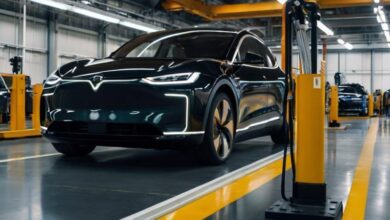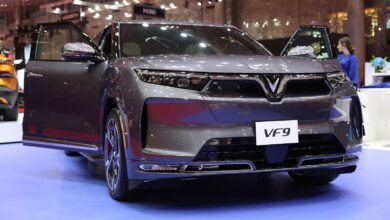A simple change can help EV drivers escape range anxiety

Two of the most significant challenges that new and potential electric vehicle (EV) drivers face are range anxiety and slow charging speeds. Now, a study by Chalmers University of Technology, Sweden, and the University of Delaware, USA, suggests that these challenges can be overcome by changing our refueling mindset rather than by enhancing the battery’s size or performance.
Moving from refueling at a petrol station to recharging an electric vehicle at the most convenient location requires a new way of thinking. Many new EV drivers continue to use their old refueling mindset, leading to anxiety about range.
However, researchers have identified three different refueling behavior types: The monitor fuel gauge model, where the driver refuels when the fuel is running out; the trip planning model, where the driver plans when and where to refuel during a journey; and the event-triggered model, where the driver automatically plugs in upon arrival at home or work. The third model represents the most effective approach for optimizing electric vehicle usage.
“Experienced electric vehicle users have chosen an event or location to trigger their plug-in; for example, they will automatically plug in when they come home or get to work, so it becomes part of their morning or evening routine, which makes it less of a chore to think about charging. There is a lot of emphasis on the time it takes to charge an EV, but if you do it overnight, it is just the time it takes to plug it in. So really, it is just the long trips that you need to plan for,” says Professor Frances Sprei of Chalmers University of Technology, who led the study, along with Willett Kempton from the University of Delaware.
To foster a shift in mindset, it is crucial to establish the appropriate infrastructure in strategic locations. The most ideal places for long-term charging are homes and workplaces, given that individuals spend extended periods of time in these settings. As such, the availability of charging points in these locations is essential.
On the other hand, many European cities are currently prioritizing roadside charging, a decision that may clash with the needs of other road users, such as pedestrians and cyclists.
“In order for people to be able to use EVs in the best possible way, policies need to adapt to ensure that people have access to charging infrastructure close to their home or workplace where possible,” says Professor Frances Sprei.
The shift in perspective could drive more people to choose electric vehicles, aligning with global and European emissions goals. Battery size is a key consideration for prospective EV owners in alleviating range anxiety.
“We do see a trend that you need to have this huge battery. But according to other research, you will generally be ok with a slightly smaller battery than the range you would have on a gasoline tank since the only time you would need a larger range is for a six-hour or longer journey, in which case the driver could charge on the go. There is too much emphasis on the need for really long ranges, and this leads to an increased price for the vehicle and increased resource use of the EVs,” says Professor Sprei.
The study indicates that most daily driving needs won’t require much thought about charging. Slow and overnight charging, as well as charging at work, not only saves on costs but also promotes battery health compared to fast charging on the go.
Journal reference:
- Frances Sprei, Willett Kempton. Mental models guide electric vehicle charging. Energy, 2024; DOI: 10.1016/j.energy.2024.130430



